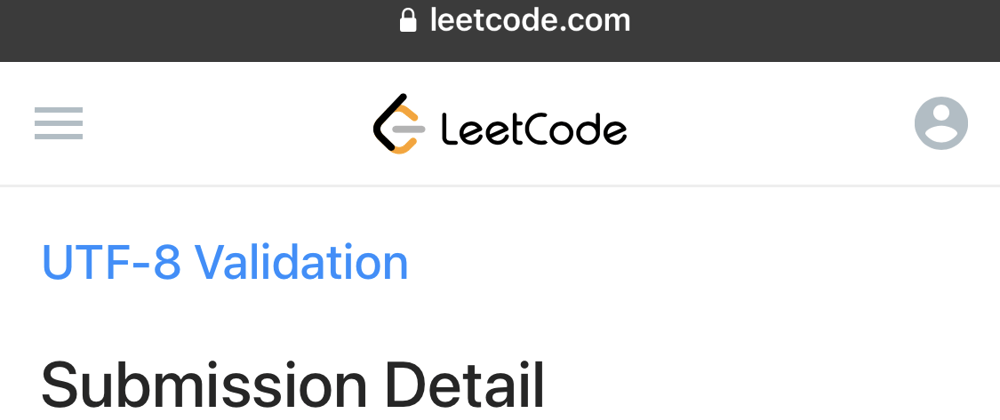I am close to the end of a 10-day coding challenge organized by Ingressive for Good and I'll be sharing my thoughts on Day 7 of the challenge.
Let me briefly describe how the challenge works before I share my experience with you. From September 21 through October 30, 2022, the challenge is to solve one common algorithm problem every day for ten days.
Today's “UTF-8 Validation" It is the 393rd algorithm challenge on "Leetcode.com".
Here is the question:
Given an integer array data representing the data, return whether it is a valid UTF-8 encoding (i.e. it translates to a sequence of valid UTF-8 encoded characters).
A character in UTF8 can be from 1 to 4 bytes long, subjected to the following rules:
For a 1-byte character, the first bit is a 0, followed by its Unicode code. For an n-bytes character, the first n bits are all one's, the n + 1 bit is 0, followed by n - 1 bytes with the most significant 2 bits being 10.
This is how the UTF-8 encoding would work:
Number of Bytes | UTF-8 Octet Sequence
| (binary)
1 | 0xxxxxxx
2 | 110xxxxx 10xxxxxx
3 | 1110xxxx 10xxxxxx 10xxxxxx
4 | 11110xxx 10xxxxxx 10xxxxxx 10xxxxxx
x denotes a bit in the binary form of a byte that may be either 0 or 1.
Note: The input is an array of integers. Only the least significant 8 bits of each integer is used to store the data. This means each integer represents only 1 byte of data.
I'll now discuss my algorithm solving experience. I created a variable and initialized it with a value of zero. The homogeneity of each byte in the array was verified by comparing it to the UTF-8 constant. The value of the variable was increased if there was no homogeneity.
This task was completed in javaScript, took 111 milliseconds to execute, and consumed about 44 MB of memory.


















